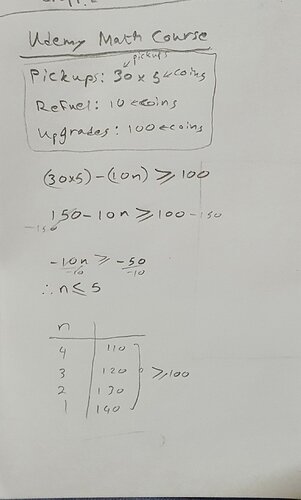In this lecture we learnt how to manipulate inequalities.
For your challenge, our designer wants to know how many times the player can refuel and still afford an upgrade at the end of the level.
We know that:
- Pickups are worth 5 coins each
- There are 30 pickups in a level
- Refueling costs 10 coins
- Upgrades cost 100 coins
For a hint, we can express our problem as:
(30 x 5) - (10n) >= 100
So we need to rearrange and solve for n.
Post your answers below and remember to use the spoiler tags.



 Here we go!
Here we go!